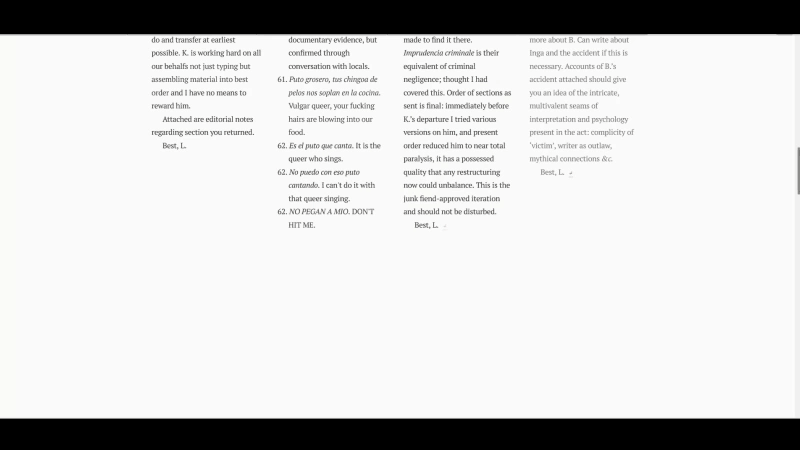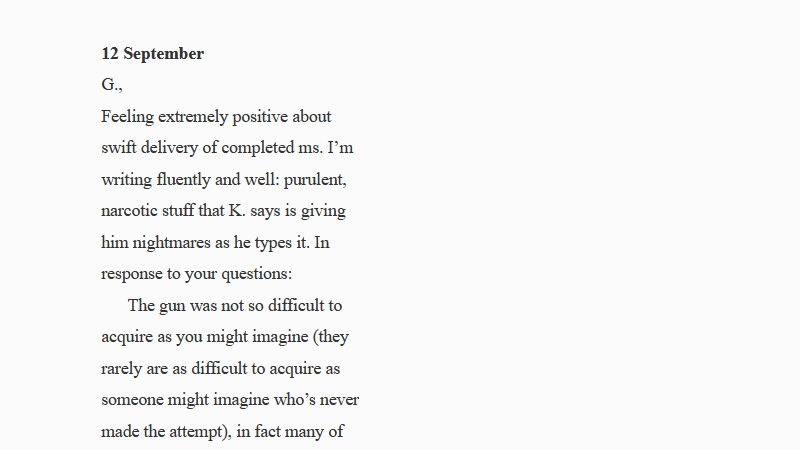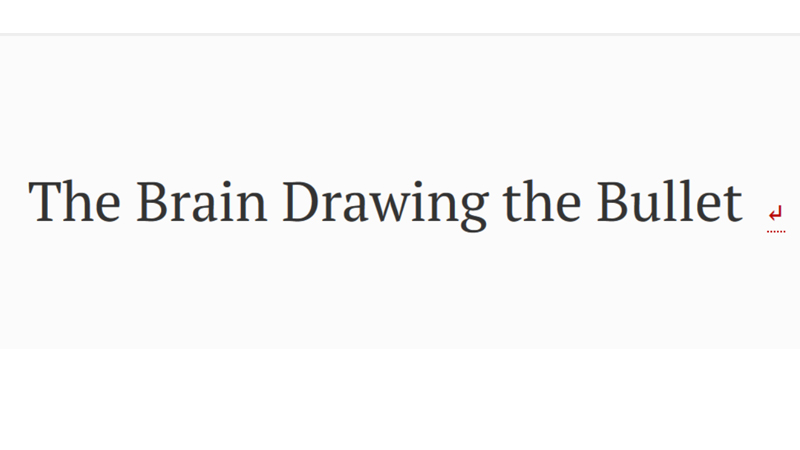"The Brain Drawing the Bullet takes as its point of departure William S. Burroughs' infamous murder of his wife Joan Vollner as a means to explore the multi-voicedness of editorial intervention. Recalling works like Mark Z. Danielewski's House of Leaves which depict a series of editors whose insertions trace their psychological deterioration over time as they fall victim to the hermeneutic black hole of their subject matter, The Brain Drawing the Bullet tells the story of an ersatz editor who invests so deeply in his research that he is led down the same violent path. The body of the text and the text as body chiasmatically intersect to produce an uneasy alignment between author, editor, and reader. Not only is Burroughs' cut up method a textual ancestor to the aleatory and hypertextual processes of electronic literature, but the footnote and editor's annotations are also a print precursor to the hypertext node. Trotter's piece is elegantly simple, yet takes advantage of the medium-specific affordances of working with the digital screen rather than printed page. The series of first-person accounts of the shooting interleaved with editor comments not only unfold through this mode of hypertextual annotation, but the writing on the screen does not remain fixed. With each click forward, marking a passage through 110 days of increasing mania, small yet significant mutations allegorize the unreliability and capriciousness of memory. Sigmund Freud famously described the mind as a 'mystic writing pad' and this text draws and redraws Burroughs' bullet, each insertion simultaneously marking a point in time and rewriting the past through the distorted focus of an obsessed editor." -- from Electronic Literature Collection, Volume 3
1 COPY IN THE NEXT
The Electronic Literature Collection Volume 3
Published in 2016 by Electronic Literature Organization.
The ELO gave this copy of the work to the Electronic Literature Lab in 2018.
PUBLICATION TYPE
Anthology
COPY MEDIA FORMAT
Web


